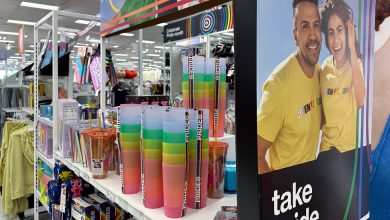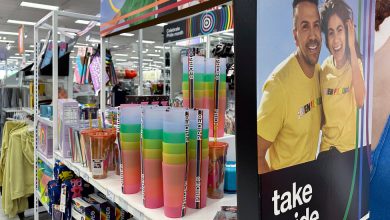How LinkedIn Became a Place to Overshare

About three years ago, Joel Lalgee started posting on LinkedIn. He works in recruiting, so naturally spent a lot of time on the site, where people list their work experience, and job seekers look for their next gig. But he didn’t just write about work. He wrote about his personal life: the mental health challenges he faced as a teenager, and his life since. “Being able to share my story, I saw it as a way to connect with people and show you’re not alone,” he said.
Something else happened, too. “Six months in, I started seeing a big increase in engagement, followers, inbound business leads,” Mr. Lalgee, 35, said. He now has more than 140,000 followers on LinkedIn, up from the 9,000 he had before he started posting.
“The way you can go viral is to be really vulnerable,” he said, adding, “Old school LinkedIn was definitely not like this.”
LinkedIn, which was started in 2003, was first known primarily as a place to share résumés and connect with co-workers. It later added a newsfeed and introduced ways for users to post text and videos. The site now has more than 830 million users who generate about 8 million posts and comments every day.
Since the start of the pandemic, as office workers missed in-person interactions with colleagues, many people turned to LinkedIn to help make up for what they had lost. They started talking about more than just work. The boundaries between office and home lives became blurrier than ever. As personal circumstances bled into workdays, people felt emboldened to share with their professional peers — and found interested audiences both in and beyond their networks.
Users, including some who had left Facebook or felt guilty about using it during work, found they could scroll through LinkedIn and still feel that they were working. And for those hoping to make a splash and build an audience, LinkedIn proved easier place to get noticed than more saturated sites. Karen Shafrir Vladeck, a recruiter in Austin, Texas, who posts frequently on LinkedIn, said the site was “low-hanging fruit” compared with crowded platforms like TikTok and Instagram.
During the pandemic, many people also wanted to post about social justice topics that, while far from the historically staid fare of the site, affected their work lives: In 2020, Black LinkedIn took off with posts about systemic racism. “After the murder of George Floyd, a lot of folks were like, I know this is unusual LinkedIn talk, but I’m going to talk about race,” said Lily Zheng, a diversity, equity and inclusion consultant. Earlier this summer, after the Supreme Court ruling on abortion, some women posted their own abortion stories.
Now, users find on a typical day that between job listings and “I’m happy to announce” posts are viral selfies of people crying, announcements about weddings and long reflections about overcoming illnesses. Not all are happy about the changes. Some said they find that they cannot use the site in the same way. A newsfeed crowded with personal posts, they said, can distract from the information they seek on LinkedIn.
“Early in the pandemic, we started seeing content we really hadn’t seen before,” said Daniel Roth, a vice president and the editor in chief of LinkedIn. He said he noticed people posting about mental health, burnout and stress. “These were unusual posts for people where they were being much more vulnerable on LinkedIn,” he said.
It wasn’t as if no one had broached those topics on the site before but, Mr. Roth said, it was “nothing like the volume” that LinkedIn started seeing in the spring of 2020, and continued seeing over the next two years.
LinkedIn is not encouraging, or discouraging, the intimate posts. “In terms of the personal content, I wouldn’t say that we got too involved there,” Mr. Roth said. But it is encouraging influencers to join the site in the hope that they will post about topics like leadership. The company walks a fine line, as it tries to encourage engagement on the site while protecting the professional context that it says its users expect. Mr. Roth said that posts about skills and work accomplishments — more classic office fare — have seen increased engagement in the past year.
In one survey of about 2,000 employed adults earlier this year, LinkedIn found that 60 percent said their definition of “professional” had changed since the start of the pandemic.

Lily Zheng, a diversity, equity and inclusion consultant, said workers should feel free to maintain boundaries between their personal and work lives, including on social media.Credit…Marla Aufmuth/WireImage
“LinkedIn’s purpose for existing is changing,” said Mx. Zheng, who uses they/them pronouns.
As is true in a workplace, sharing personal information on LinkedIn can foster a sense of belonging — but it can also lead to regrets. Mx. Zheng, who has more than 100,000 followers on LinkedIn, said that companies are asking, “How much disclosure is allowed under this changing definition of professionalism? It’s not an answer that exists yet.”
“There is a tension here. One the one hand, we want to support workers’ self-expression and self-disclosure,” Mx. Zheng said. But, at the same time, they added, workers should feel free to maintain boundaries between their personal and work lives, including on LinkedIn.
Over the past couple years, LinkedIn has been trying to encourage content that will keep users engaged on the site: Last year, LinkedIn started a creator accelerator program to recruit influencers. A spokeswoman for LinkedIn, Suzi Owens, said it was rolling out new tools and formats for posting, as well. In the past, LinkedIn influencers were often “thought leaders,” like business pundits or executives who post advice to millions of followers. More recently, content creators from TikTok and YouTube, including stars like Mr. Beast, have also joined LinkedIn.
Though LinkedIn is recruiting influencers, Mr. Roth said, “there shouldn’t be that much content that goes viral.” He added that most posts should only reach people’s own networks.
A full-time content creator who participated in LinkedIn’s creator accelerator program recently posted something that went well beyond her own network — and saw how far a more personal tone could reach.
“I had a post that went absolutely viral on LinkedIn,” said the influencer, who uses the name Natalie Rose in her work. The post, a crying selfie with a caption about anxiety and the reality of being an influencer, got over 2.7 million impressions. “That led to me having some business opportunities with anxiety apps, things like that,” she said. “I got a lot of connections and followers from it, all because I chose to be vulnerable in a post.”
Ms. Rose, 26, said she used to think of LinkedIn as an online résumé. “In my understanding, it was kind of used for old people,” she said. But her thinking has changed. “I 100 percent view it as a social media platform now.” She added that she found commenters more positive and mature than audiences on TikTok, where she has 2.7 million followers.
Mr. Roth said that he does not see LinkedIn as a social media platform in the vein of TikTok or Facebook — though some users see parallels and don’t like it. They frequently, grumpily comment that “this isn’t Facebook” on personal LinkedIn posts.
Sofía Martín Jiménez, 30, used to be a LinkedIn power user. She used it all the time for a previous job in recruiting, and often scrolled through her newsfeed to seek book recommendations and keep up with articles about her field.
Since the pandemic began, Ms. Jiménez, who lives in Madrid, said her feed has become so cluttered with people’s deeply personal updates — stories of coping with a loved one’s death or overcoming an illness — that it is nearly unusable for professional tasks. “Now the feed is an obstacle,” she said. “I had to change my way of working on LinkedIn.” She now uses keywords to directly search for people’s profiles and avoids the home page.
Last year, Mr. Lalgee, the recruiting industry worker, started to feel ambivalent about the attention he got from his personal posts. He wondered whether the hope of reaching a wide audience was leading people to share more than they should, or even to post emotional stories for attention. “It creates almost a false sense of vulnerability,” he said. “And then it becomes really hard to know, is this person genuine, or are they just doing it to go viral?”
Ms. Owens, of LinkedIn, said that the company plans to continue rolling out product changes to ensure that people see relevant content in their feeds. “What’s unique about LinkedIn is that it’s not creation for the sake of entertainment — it’s about creation for economic opportunity,” she said.
For those who want to see their life updates reach a wide audience, there is a cottage industry of consultants — and even a parody viral LinkedIn post generator — to help. John Nemo, a consultant who specializes in generating business leads for clients on LinkedIn, said that he coaches people to follow a formula: “personal story + business lesson = the content.”
He demonstrated his formula with news about the death of a hypothetical dog named Ralph.
“Personal story is Ralph died,” he said. “What’s the business lesson in this?”
He suggested starting the post with the update: “I lost my best friend yesterday, Ralph the dog, and here’s a photo of us.”
Then add an observation about making deals: “One thing I’ve learned in sales is you’re constantly losing, you’re constantly getting rejected, you’re constantly having people abandon you.”
Link it back to the dog: “One thing I love about Ralph, as any dog owner knows, is that they’ll never abandon you.”
Sprinkle in some business advice: “You can’t get your validation from your sales calls because people reject you all day. You’ve gotta find your validation and self-esteem from loved ones or pets or whatever, religion.”
Finally, prompt your followers: “Share a picture of your dog in the comments.”
“The more personal it is, the more dramatic it is, as long as there’s inspiration and a lesson,” Mr. Nemo said, “That’s what I’ve seen most viral content be.”




